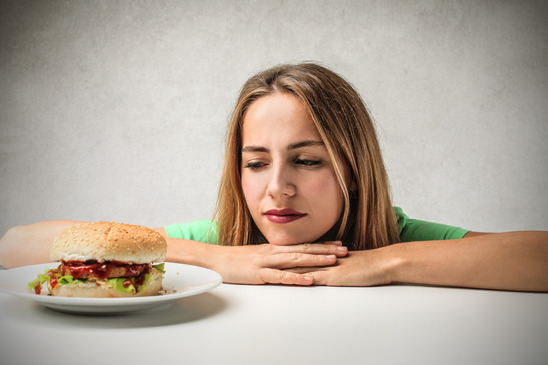Review: The Every Other Day Diet By Jon Benson

Hungry? Eat what you want… every other day.
OK, I admit it — from the moment I stumbled upon Jon Benson and Janis Hauser’s ” The Every Other Day Diet” (also referred to as “EODD”), I was intrigued.
Why?
Well, because the majority of conventional diets require extended periods of caloric restriction and extreme will power. Not surprisingly therefore, such diets cannot be sustained over the long haul.
And that’s unfortunate, because in order for you to lose the weight you want, you need a “long haul” solution. One that does not require massive amounts of willpower, severe calorie reduction and the restriction of all your favorite foods. One that can evolve into a “lifestyle change.”
Because let’s face it… if you adopt a diet you cannot sustain, you gain back whatever weight you lost (and then some) when you return to your regular eating habits.
“We need to acknowledge willpower as part of a lifestyle approach to being lean and fit, but certainly not the cornerstone. In fact, we need strategies that remove willpower from the equation most of the time. That is what EODD is all about.” Benson, Hauser, “The Every Other Day Diet”
So when I saw this diet, I thought… “Eat what you want every other day? Hey, these guys just might be on to something!”
So I plunked down my credit card, ordered the product, and 20 minutes later I was busy reading away.
A few important points before I discuss the crux of the program…
- You must be dedicated: Anytime you wish to implement changes into your life, you need to be focused on making them work. The less extreme the change, the less dedication is required. Nonetheless, you need to be serious about making a change if you wish to be successful with the EODD.
- You must be willing to do some form of exercise. Sorry, but there’s no other way. While you don’t have to do anything extreme, you must do something.
- You must be reasonable: As our intrepid authors point out, you didn’t get into “this shape” in a couple of weeks or months, so how can you expect to lose it all within that time frame?
What’s the Every Other Day diet really all about?
The program is designed to
“…tap into bodyfat for fuel, and reduce calories without having the body reduce the metabolic rate.”
OK, but what does that really mean? After all, that’s what every diet claims to do.
EODD focuses on “interval eating” and “planned variance.” Sounds impressive, right? Well, it’s really just another way to describe “calorie cycling.”

Of course… “interval eating” and “planned variance.”
What’s the logic behind caloric cycling?
Basically, if you reduce calories too much, the body’s metabolic rate slows down and inhibits your ability to lose weight. But at the same time, you must reduce your caloric consumption or there’s no way you can burn off those unsightly love handles.
The key therefore, is to trick the body into believing calories are not being restricted, when in fact they are.
You do this by cycling your calories.
For example, for two days, you eat slightly more calories than your body requires. Then you eat less for two days, more for a single day, and less for two more days. Over the course of a week, you end up eating fewer calories than you need, resulting in a caloric deficit, and therefore, weight loss.
Since the body’s metabolism is always kept “guessing” it never slows down to adapt to a calorie-restrictive diet, and the weight continues to come off.
There are three variations of the EODD diet — ranging from a primer, to a maintenance “lifestyle” program, to an extreme program for athletes and body builders.
The book features a nifty comparison chart on page 81 that will help you determine which part of the plan is right for you. It’s pretty cool that there are three plans you can choose between on the Every Other Day Diet.
Since each varies in intensity, it allows you the ability to “ease into” the EODD eating plan at your own rate. And that’s a bonus!
Each variation of the EODD features a 7 day system that varies calories and macronutrients (carbs, protein, fats). Each of the three plans in EODD diet has its own schedule of “Burn” and “Feed” days. Let me explain…
Burn days: Not surprisingly, these are the days where you consume fewer calories than your body requires — one half to two thirds of your baseline maintenance caloric intake, to be exact. On these days you eat low calorie foods — veggies and other fiber rich offerings, as well as plenty of lean protein.
Feed days: Again, it’s pretty obvious. On these days, you are allowed to enjoy your favorite foods — within the plan’s guidelines, of course (i.e., you can eat pizza, but you can’t eat an entire pizza!). You’ll consume more calories than you need — as much as one and a half times your baseline of calories.
Do I need to count calories?
The logistics of the program are fairly simple. Depending on where you stand, you may find it a relief to find that the EODD does not focus on endless calorie counting.
The secret to not counting calories, says the Every Other Day Diet, is to eat fewer ingredients.
All food portions, of course, are measured. But no worries, you can leave the kitchen scale alone, because the EODD uses the “Home” or “Hands On Method Of Eating” measuring system.
Basically, portions of food coincide with sections of your hands (your stomach is approximately the size of your cupped hands, says the EODD).
For example, the palm of your left hand may coincide with your protein portion, the fingers hold a scoop of your “starchy” carb, and your left hand is the size of your greens portion (actually, you can eat unlimited greens on this diet).
Thumbs are used to measure garnishes and condiments — like dressings, etc.
If this sounds a bit confusing, don’t worry. The book explains it all thoroughly with plenty of illustrations.
Where this measuring system falls short is when your hands are not proportional to your body.
For example, a 250-lbs. guy should have hands much bigger than a 120-lbs. woman, and his portions should be in direct proportion to his body size. But that’s not always the case.
My hands, for example, are small — only slightly larger than my girlfriend’s, whom I outweigh by 120 lbs. or so. Luckily, the EODD addresses this as well — having you build from the size of your hands, and scale the portions up or down, according to your situation.
Unlike most diets you’ve read about lately, this one does not have you eating 6 meals a day. A typical day consists of breakfast, lunch and dinner and an evening “detox meal.” A once-daily snack is permitted between lunch and dinner on “burn” days.
And really, that’s the crux of the diet in a nutshell. Of course, there’s lots of stuff here I haven’t covered — this is, after all, a very thorough 200 page publication. Although there’s tons of great material in this publication, one section definitely worth mentioning is Chapter 5, entitled “Mind Over Body.”
It contains a series of steps and two exercises (a media fast and a series of exercises with the use of anchor cards) to empower your mind to… uh… empower you.
It’s about using positive reinforcement techniques to stack the “dieting deck” in your favor.
Can you really eat “what you want” every other day on this diet?
Yes, on the Primer plan, you can.
Within reason. You still need to exercise portion control, and you won’t be able to pig out at every meal. Believe it or not, desserts are also allowed… occasionally.
With the Lifestyle plan, there are only 2 “feed” days per week, so it’s a little more restrictive than the Primer plan. So the “every other day” aspect of this diet really only pertains to the Primer plan.
Bottom line?
I like the simplicity of this diet as well as the caloric cycling element it contains. It’s a well written and attractively formatted volume. The bonus files that accompany it offer good value, too. Also included is a year’s worth of “weekly support” newsletters which provide “Recipes, Motivational Audios, and Success Stories To Keep You On Track To Your Ideal Body!”
All in all, The Every Other Day Diet is definitely worth considering if both simplicity and the ability to continue to eat your favorite foods while dieting are important to you.


